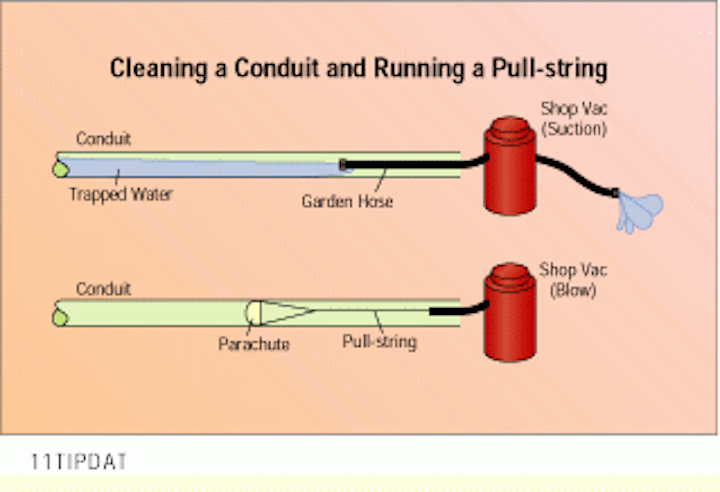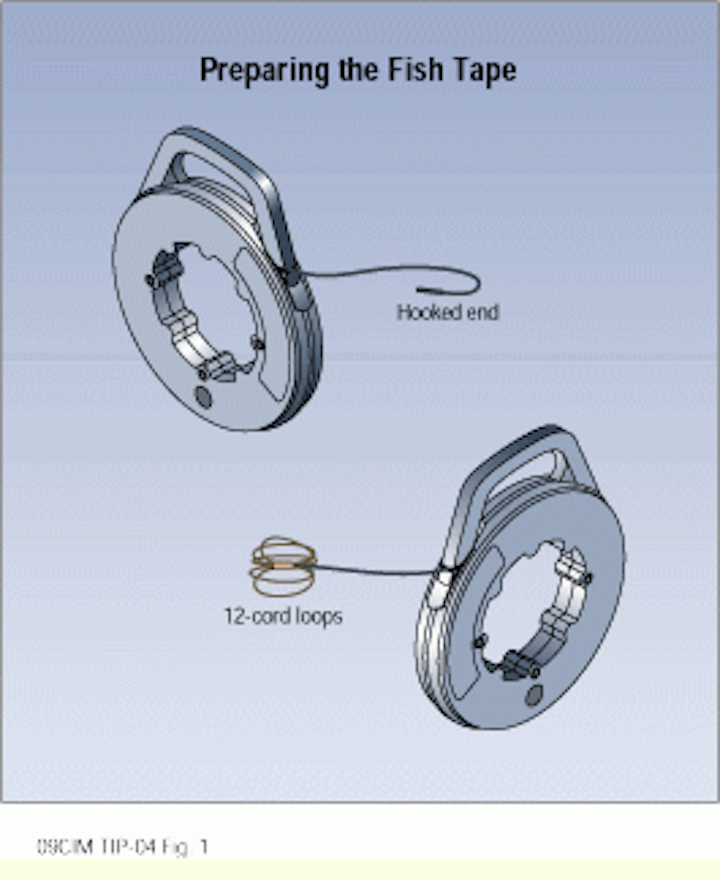Pulling wires can be difficult enough through straight runs of conduit but throwing a few bends and turns in the run increases friction making pulling much more difficult that s when you use a lubricant.
Feeding cable through conduit.
Wire pulling compound is a non conductive lubricant in either a gel or a slimy soapy form that makes both the conduit and wires slick by coating the wiring allowing.
While using a wire fill table for electrical conduit it is best to size the conduit up to the next incremental size to be sure the conduit is not overfilled and it will make pulling in.
Wire is pulled through chases conduit or knockouts to get from the electrical supply to the final destination.
Electrical employees run or pull wire throughout a worksite.
Feed the end of the wire or cable through the loop you made in the pull wire.
The housing can usually be cranked to feed or reel in the tape.
Place your wire box so that it is free to leave the box and freely enter the conduit.
Use tape to fix the end like you pull wire.
Slip any additional wire s several inches into the loop fold over and wrap around the first wire.
Go to the other end of the conduit.
Lubricating the wires.
This path is usually under the floor or in the ceiling.
Secure the end with tape as you did with the pull wire.
This will make for a difficult pull through the conduit.
Pass the end of the wire or cable through the ring that you make in the wire.
The amount of wire fill inside a conduit must be configured properly to prevent overheating of the wire which is why conduit fill tables are very important.
Position your box of wire so that it will freely leave the box and will enter freely into the conduit.
A ring of the same size as a drawing wire is made in the feed cable.
A fish tape is a thin sturdy wire inside of a plastic housing and acts like a snake to move through conduit.
Step 3 pull the wire through the conduit.
Make a loop in the feed cable the same size as the one in the pull wire.





























